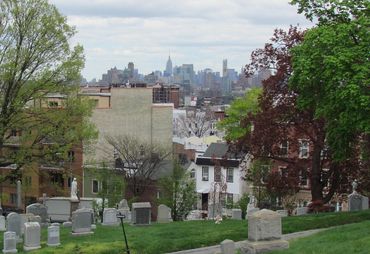It’s like opening day at Yankee Stadium, but nearly 3 months late and with better weather. New York City is opening up – carefully, with lots of guidelines – but opening nonetheless. New Yorkers are nervous, excited, and can hardly wait to see what the season will bring. Sidewalk cafes and restaurant patio dining, most offices, most small businesses, and the subway are all open. Mayor Bill de Blasio estimates up to 300,000 workers will be heading back to work as an all-too-quiet city gets back to business and daily life. That is in addition to the hundreds of thousands of essential services workers, in sanitation, public safety and health care who kept the city going through the most challenging weeks of the pandemic.
But now New York city and state, as well as New Jersey and Connecticut, are going through a multi-phase re-opening in response to the decline and control of the Covid-19 infection and spread. New York has been testing for weeks and the daily number of new cases is low – a success rate the governor, mayor, and all residents of New York want to see sustained – so we’re back, but there are rules. Here’s a quick rundown of what to expect in New York City and the surrounding area, from a real estate angle:
1. “Renter flight” is true, but exaggerated
Yes, thousands of residents moved out, but most temporarily and most of those who moved away were on the high end of the rental market scale. The majority of tenants stayed put and interestingly, the majority of rents got paid. New York, like other markets, had moratoriums on evictions and supported delayed payment of rent, but 90% plus of rentals in recent months were paid within contracted terms, or at about the same rate as in a regular, non-pandemic month.
There was definitely movement in the market though, as renters looked for larger places, anything with a balcony, closer to a park, or with extra square feet to accommodate working from home. It’s expected that many employees will only gradually return to daily office work and use of public transportation, and since schools and summer camps are closed, finding extra space is desirable.
Between these ‘expansion’ moves and general renter stability, landlords have not seen much reason to drastically drop rents to hold onto tenants. There have been re-negotiations and concessions and it never hurts to ask, but in general, those coming into the market should not expect a fire sale. At lease, it has not happened yet. As the city reopens, landlords will be watching to see who comes back and whether New York City is still going to attract the high-talent, city-loving resident of the past few boom years. The data will tell us soon enough.
2. Possibility of lower rents in the future
Should vacancies stay at historical highs entering the slow winter season, you may see significant reductions in rent, but landlords aren’t panicking, yet. The high-end of the market in luxury doorman elevator buildings in Midtown Manhattan with lots of amenities (that you currently cannot use) is suffering from an excess of availability (from the landlords’ perspective.) Yet studios below $2,000/month are in high demand and short supply in neighborhoods like Kew Gardens, Forest Hills, Astoria, Woodside, and Rego Park in Queens. Roommates who headed home and those left behind decided that it was time to get their own space.
3. Expect to play by a new set of rules
What any prospective renter and real estate agent should expect is to play by new rules. In-person property showings will be fewer in number and initially for vacant apartments only, agents must wear masks and gloves, the number of people in a unit at any time will be restricted (depending on space), and there will be more time between showings to accommodate extra sanitary measures and wipe downs. Don’t expect to drop in to an open house and do expect your agents to continue to advocate virtual tours and showings at least in the preview stage; it will be time consuming to try to visit multiple properties in a day, so engaging your agent via chat and video is a faster and smarter way to access and review property choices.
And of course, there is a backlog to work through. People have been waiting for months to make their moves. Inventory in desirable neighborhoods, as always, is tight and the process will take longer. Not every governmental office and agency in the city is working full time hours, so any action requiring their review will take longer than normal.
4. The suburbs are booming
And what about outside the city? As noted above, there is a genuine trend to the suburbs, just not a mass exodus. Families in apartments are looking for single family homes to rent. People in relatively higher priced apartments who realize they will be spending a lot more time at home have opted for looking at properties in Westchester County, Connecticut, and Northern New Jersey.
Of course, with the greater traffic has come an increase in rent and home purchase prices, and inventory is limited. All the more reason to tap into the knowledge and insight of brokers who can separate fact from fiction and settle you into the community and home you’re looking for. While New York City was coping with the pandemic and planning its comeback, Station Cities expanded and added to its talent by acquiring Station Cities, a well-known relocation/real estate brokerage in the Tri-State market. With 100+ agents and depth, insight and experience in the specialized needs of our market niche, we’re ready to help: New York, New Jersey and Connecticut welcome you.




 Sign up today to get access to 1000's of homes we have available!
Sign up today to get access to 1000's of homes we have available!